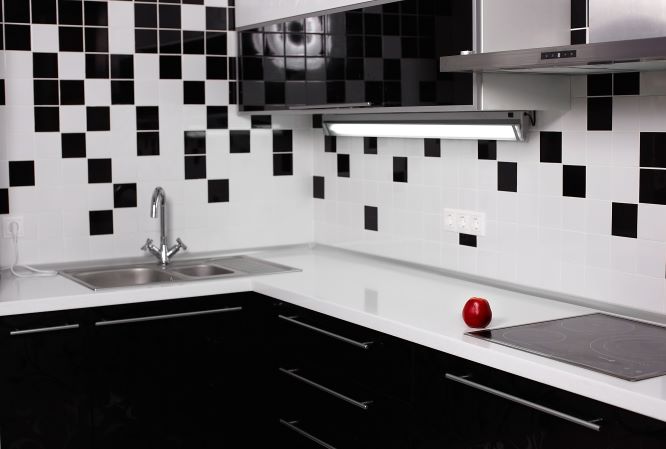Have you ever wondered how a backsplash kitchen backsplash can transform your cooking space? This often-overlooked design element is more than just a protective barrier for your walls—it’s a statement piece that ties together your kitchen’s aesthetic. From its humble beginnings as a functional feature to its current role as a design centerpiece, the backsplash has become a must-have in modern homes.
In this guide, we’ll explore everything you need to know about backsplash kitchen backsplash designs, materials, installation tips, and maintenance. Whether you’re planning a full kitchen remodel or just looking to refresh your space, this article will help you make informed decisions.
1. Understanding the Backsplash Kitchen Backsplash
What Is a Kitchen Backsplash?
A kitchen backsplash is a vertical surface installed on the wall behind countertops, sinks, and stoves. Its primary purpose is to protect walls from splashes of water, grease, and food. Over time, the backsplash has evolved from a purely functional feature to a design element that enhances the overall look of a kitchen.
Backsplashes can cover small areas, such as the space behind a sink, or extend across entire walls for a dramatic effect. They’re available in a variety of materials, colors, and patterns, making them a versatile choice for any kitchen style.
History and Trends
The concept of the backsplash dates back to the early 20th century when kitchens were designed for practicality. Early backsplashes were simple and utilitarian, often made of plain tiles or painted surfaces.
Today, backsplashes are a focal point in kitchen design. Popular trends include full-height backsplashes that extend to the ceiling, bold patterns, and the use of mixed materials like glass and metal. These trends reflect the growing importance of the backsplash as both a functional and decorative element.
2. Key Benefits of Installing a Kitchen Backsplash
Protection and Durability
One of the primary benefits of a backsplash is its ability to protect walls from moisture, grease, and heat. This is especially important in areas prone to spills, such as behind the stove or sink.
Aesthetic Appeal
A well-designed backsplash can elevate the look of your kitchen, adding texture, color, and personality. It serves as a bridge between countertops, cabinetry, and appliances, creating a cohesive design.
Increased Property Value
Investing in a stylish backsplash can boost your home’s resale value. Potential buyers often view a modern, well-maintained kitchen as a major selling point.
Easy Maintenance
Backsplashes are designed to be easy to clean. Most materials, such as ceramic tiles and glass, can be wiped down with a damp cloth, making them a practical choice for busy households.
Customization Options
From budget-friendly peel-and-stick tiles to luxurious natural stone, there’s a backsplash option for every style and budget.
3. Backsplash Kitchen Backsplash Styles and Design Options
Popular Styles
- Classic Subway Tile: Timeless and versatile, subway tiles are a popular choice for both traditional and modern kitchens.
- Herringbone and Chevron Patterns: These intricate patterns add a touch of elegance and visual interest.
- Mosaics and Mixed Materials: Combine glass, stone, and metal for a unique, textured look.
- Large Format & Slab Backsplashes: Seamless and modern, these options create a clean, minimalist aesthetic.
- Textured and 3D Tile Effects: Add depth and dimension with tiles that feature raised patterns or textures.
- Full-Wall or Statement Backsplashes: Make a bold statement by extending the backsplash to the ceiling.
Choosing Colors, Patterns, and Textures
When selecting a backsplash, consider how it complements your cabinetry, countertops, and flooring. Neutral tones create a timeless look, while bold colors and patterns can serve as a focal point. Don’t forget to consider grout color—it can either blend in or create contrast for added impact.
4. Material Guide: What’s Best for Your Backsplash Kitchen Backsplash?
Most Popular Materials
- Ceramic Tiles: Affordable, durable, and available in countless designs.
- Porcelain Tiles: Known for their durability and water resistance, porcelain tiles are a premium option.
- Glass Tiles: Reflective and modern, glass tiles are easy to clean and ideal for contemporary kitchens.
- Natural Stone: Marble, granite, and slate offer a luxurious, unique look but require regular sealing.
- Metal: Stainless steel, copper, and brass provide an industrial-chic vibe and are heat-resistant.
- Laminate: A budget-friendly option with a variety of patterns and colors.
- Peel-and-Stick Tiles: Perfect for renters or quick updates, these tiles are easy to install and remove.
5. Planning Your Perfect Backsplash Kitchen Backsplash
Budgeting for Your Project
The cost of a backsplash varies depending on the material and installation method. Ceramic tiles are budget-friendly, while natural stone and custom designs can be more expensive.
Measuring and Sizing
To determine how much material you’ll need, measure the width and height of the area you want to cover. Decide whether you want a partial backsplash (e.g., just behind the stove) or a full-wall design.
Design Considerations
Your backsplash should complement the overall style of your kitchen. For example, a sleek glass backsplash works well in a modern kitchen, while a rustic stone backsplash suits a farmhouse aesthetic.
6. Installation: How to Install a Kitchen Backsplash
Step-by-Step Guide
- Preparation: Clear the workspace and protect surfaces.
- Measuring and Layout: Plan your design and dry-lay tiles to visualize the final look.
- Surface Prep: Clean and prime the wall to ensure proper adhesion.
- Cutting Tiles: Use a tile cutter or wet saw for precise cuts.
- Applying Adhesive: Spread adhesive evenly and press tiles into place.
- Grouting and Sealing: Fill gaps with grout, clean excess, and seal for durability.
- Finishing Touches: Reinstall outlet covers and clean the surface.
7. Maintenance and Cleaning Tips
- Daily Cleaning: Wipe down the backsplash with a damp cloth to remove splashes and stains.
- Deep Cleaning: Use a mild cleaner or a mixture of vinegar and water for tougher stains.
- Material-Specific Care: Natural stone requires sealing, while glass tiles may need streak-free cleaners.
8. Creative Inspiration and Design Ideas
- Bold Colors: Make a statement with vibrant hues like emerald green or cobalt blue.
- Mixed Materials: Combine glass and metal for a modern, eclectic look.
- Lighting: Install under-cabinet lighting to highlight your backsplash.
9. Frequently Asked Questions (FAQ)
How high should a kitchen backsplash go?
Most backsplashes extend from the countertop to the bottom of the upper cabinets, but full-height designs are becoming increasingly popular.
Can a backsplash be installed over existing tile?
Yes, as long as the existing tile is in good condition and properly prepared.
What is the easiest backsplash to maintain?
Glass and ceramic tiles are among the easiest to clean and maintain.
Conclusion
A backsplash kitchen backsplash is more than just a functional feature—it’s a design element that can transform your kitchen. From protecting your walls to enhancing your home’s value, the benefits are undeniable. Whether you opt for a classic subway tile or a bold statement piece, the right backsplash can reflect your personal style and elevate your space.
Ready to start your backsplash journey? Consult with professionals, explore design tools, or try a DIY project to bring your vision to life.



